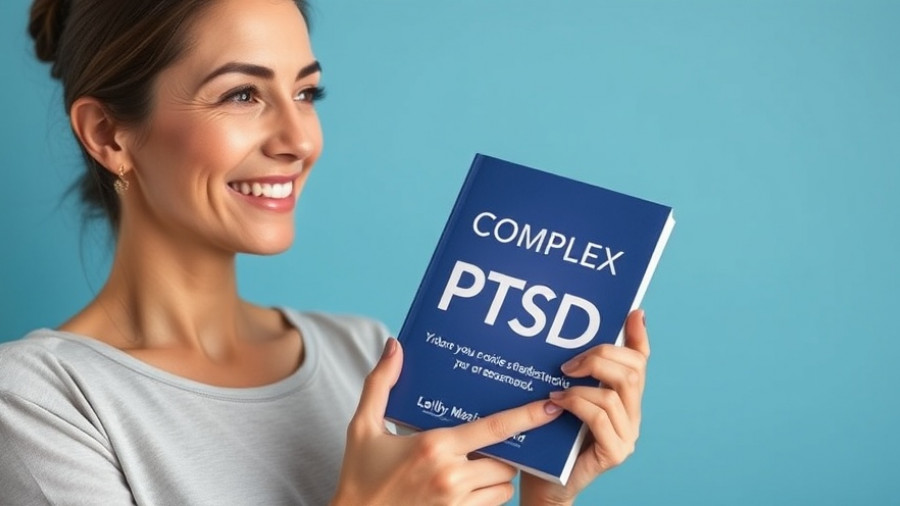
Understanding the Landscape of Complex PTSD
When discussing mental health, Complex PTSD (CPTSD) often remains a shadow to its more recognized counterpart, traditional PTSD. While many associate PTSD with veterans and dramatic single events, CPTSD emerges from the long-standing emotional turmoil present in one’s formative years. The stark reality is that many have lived through a war zone—one often characterized by the dynamics of their household. Whether it involved emotional abuse, neglect, or the unpredictability of caregivers, the wounds inflicted through childhood can create profound and lingering effects into adulthood. This article draws inspiration from Pete Walker's insightful book, Complex PTSD: From Surviving to Thriving, which serves as a poignant guide for those navigating the path of healing from childhood trauma.
In 'Complex PTSD: From Surviving to Thriving', the discussion dives into the complexities of recovering from childhood trauma, exploring key insights that sparked deeper analysis on our end.
The Symptoms and Impact of PTSD
CPTSD is particularly insidious because it manifests not after one significant trauma but through a series of emotional injuries. It creates a survival mode reflex in individuals who grow up in homes where emotional needs are unmet. The consequences can differ remarkably from classic PTSD symptoms. Children exposed to ongoing trauma often develop protective behaviors, but as adults, these can result in emotional flashbacks, anxiety, and self-sabotage. Sadly, these behaviors often go unnoticed, as they may mimic other conditions like depression or anxiety disorders, making diagnosis challenging.
A Deeper Dive into Emotional Flashbacks
Emotional flashbacks, a unique symptom of CPTSD, can arise unexpectedly. Unlike vivid sensory memories of trauma, these flashes often evoke overwhelming feelings of shame, despair, or panic without a clear trigger. They are reminders of unresolved childhood traumas and require a nuanced understanding for effective management. As Walker suggests, recognizing emotional flashbacks as a form of 'emotional time travel' can empower individuals to reclaim their present moment, leading to grounding techniques that reinforce safety and self-soothing.
Transforming Your Inner Dialogue
One essential aspect of healing involves addressing the inner critic—an internalized voice shaped by abusive experiences. This dialogue often diminishes self-worth, creating a cycle of negativity that is difficult to escape. Walker promotes the development of an 'inner defender' that counters this critical voice, fostering a compassionate self-dialogue and encouraging self-validation. Engaging in practices such as affirmations and journaling can facilitate this shift, allowing individuals to reclaim their narrative and cultivate resilience amidst their struggles.
Reparenting: A Vital Strategy for Recovery
Reparenting is a transformative process that enables individuals to nurture themselves as parents should. This approach includes providing emotional and physical care while cultivating healthy coping mechanisms. By effectively 'parenting' their inner child, individuals learn to address their emotional needs and enhance their self-compassion. Strategies might involve setting personal boundaries or developing healthy routines that prioritize well-being—a vital step for those grappling with CPTSD.
The Role of Therapy in Healing
Therapy, particularly trauma-informed approaches, plays a crucial role in recovery from CPTSD. Many individuals underestimate the importance of professional guidance as they work through complex psychological challenges; however, engaging with therapists familiar with trauma can significantly enhance personal growth. Therapeutic modalities like Cognitive Behavioral Therapy (CBT), Dialectical Behavior Therapy (DBT), and Acceptance and Commitment Therapy (ACT) offer structured approaches to address the symptoms of CPTSD effectively. Integrating these methods into daily routines can lead to lasting changes in emotional health and well-being.
Connecting and Establishing Safe Relationships
Building safe and supportive relationships is paramount on the road to recovery. Healthy connections help counteract feelings of isolation and distrust lingering from traumatic experiences. Engaging with support groups or professionals can provide safe spaces for vulnerability, allowing individuals to practice healthy expressions of emotion. Trusting relationships can significantly aid in rewiring one's perception of safety and belonging, creating an invaluable foundation for healing.
With resilience, commitment, and the right support, individuals can learn to navigate past trauma, reconstruct their narratives, and forge paths toward healing. It's essential to remember that recovering from CPTSD is not an isolated journey; a stronger community emerges when those within it embrace their stories. For anyone grappling with these issues, consider seeking therapy or joining a support group—the steps toward thriving begin with connection and understanding.
In Complex PTSD: From Surviving to Thriving, Walker emphasizes that you are not broken. With time and practice, your body and mind can learn to thrive, not just survive. Take the time to connect with your inner self and foster relationships that nurture healing, joy, and purpose in your life. You deserve to create a safe space for yourself and others, ultimately transforming the pain into strength so you can thrive. Seek support, embrace your journey, and remember: healing is a continuous process.
 Add Row
Add Row  Add
Add 




Write A Comment